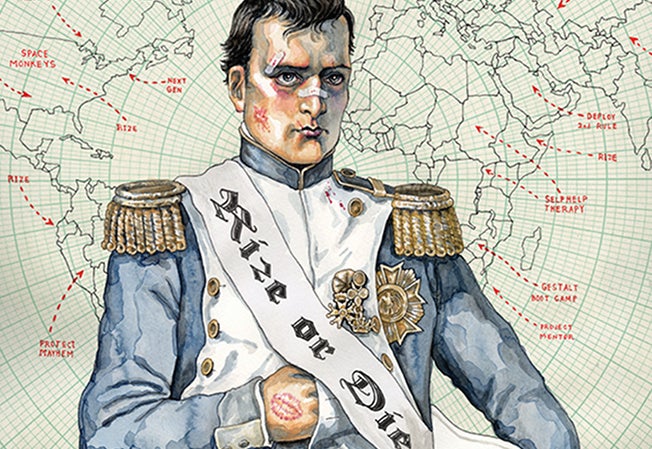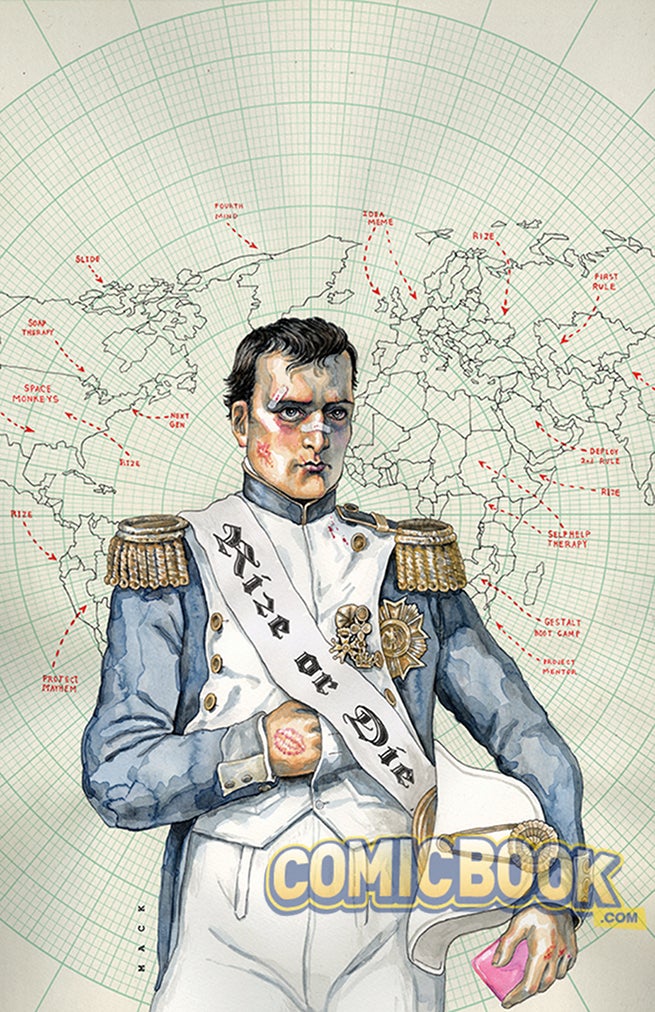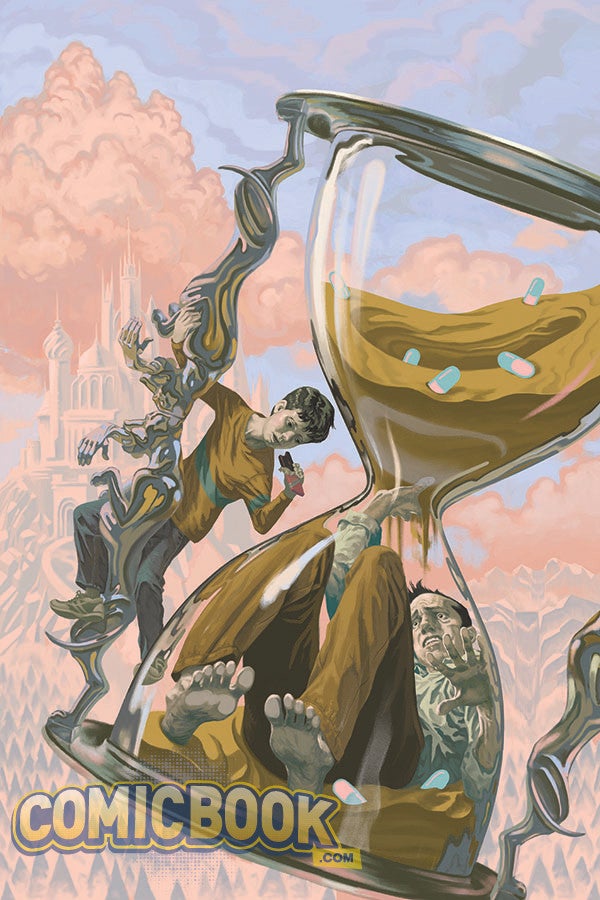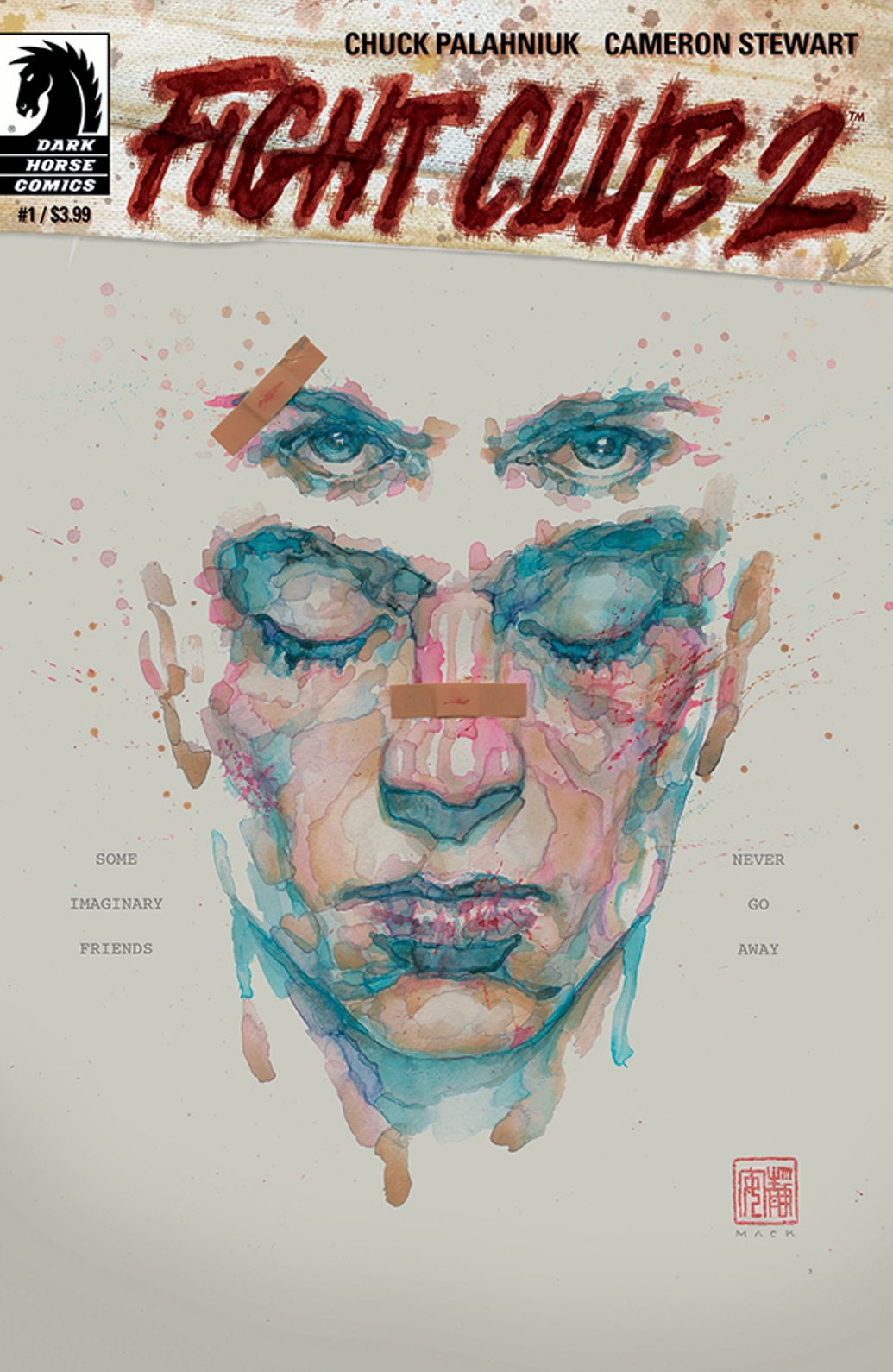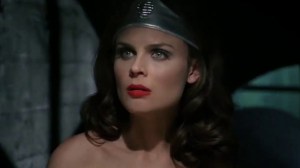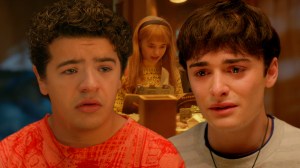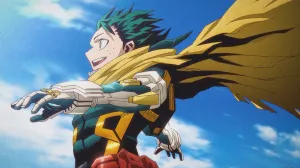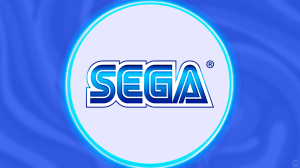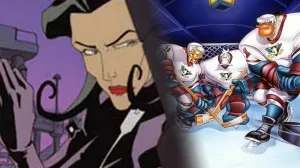Welcome to Fight Club.
Videos by ComicBook.com
This month, we’re talking with Fight Club 2 cover artist David Mack.
Mack, a winner of Eisner, Harvey and Kirby Awards during his career, is best known for his creator-owned series Kabuki, although he’s also worked on major superhero properties like Daredevil and New Avengers and wrote a children’s book, The Shy Creatures.
Currently, he’s working with Dark Horse both on Fight Club 2 and on bringing his Kabuki library to their oversized, hardcover Library Editions.
Mack joined ComicBook.com to talk about Fight Club (a big no-no, by the way), Kabuki and to share an exclusive look at the cover to Fight Club 2 #6.
You can read our series launch interview with Fight Club creator and series writer Chuck Palahniuk here.
How did you become involved with the project?
I had known Chuck since 2006. Discussing work and stories and ideas with him over lunch and coffee in Portland over the years. And he wrote the introduction to my book KABUKI: The Alchemy.
It was 2013 when I got an email from Dark Horse editor Scott Allie that he heard Chuck had written the script to Fight Club 2 and was considering a publisher for it. Immediately I emailed Chuck and suggested that he consider Dark Horse as a publisher for it since they are both in Portland, and I offered to him that I would be happy to be of use in the project in any capacity that Chuck saw fit.
What was the biggest appeal to coming on board a project like this — the property or the creators?
Yes. Working with Chuck Palahniuk, and also the next story of Fight Club. Both of those are huge. And each member of the creative team is a joy to work with. As well as editor Scott Allie and each skilled member of Dark Horse Comics that I’ve had the pleasure to work with. From top to bottom, its been a joy and a dream project.
Is there a particular theme you’re building with your covers? As in, if we look at all of them once the series is done, was there a kind of structure considered beforehand?
I think they will exist as interesting facets of the story. There are details in the story that refer to specific historical figures and historical works of art and literature, and some of the covers play on that. There is a theme of identity in the covers. And a theme of the conscious and the subconscious.
In terms of a loose sequence, Issue 2 shows a house made of matchsticks in the background and issue 3 has burnt matches suggesting a skeleton of a house of fire. Each are specific to the stories in the issues but also can act sequentially.
If you look at the close up face on issue #1, the bandages on that face are in the same place as the full shot of the narrator on issue #2. And they correspond to other versions of Tyler on other covers in the series. There are some details like that in many of the covers that are a part of a thematic structer that I build on, but most of those details won’t be consciously noticed by the viewer.
Is some of the headier, trippier material involved in Fight Club challenging to convey in a single image, and/or is that challenge part of what makes the project appealing?
That is both challenging and appealing. To give voice and image to some of the thoughtful ideas of the story, and try to select the right images to evoke the feel of the emotional and thematic content.
With the understanding that it would have ended up a wildly different project, if you’d been asked to do some interior work for this project, would you have been open to it?
I may have been up for it in some way if it worked for the story, or maybe collaboratively in certain parts. But I really prefer working on this project in the capacity of creating the covers and promotional images. I get to crystalize some story ideas and themes into iconic images and I get to put a lot of thought into that.
Chuck Palahniuk said a really nice thing about Cameron and I each working on this Fight Club in our own way, in that he said “Cameron is great at depicting the conscious, and David is skilled at depicting the unconscious”. I really liked that. He went on to say something to the effect that the book had the right balance of conscious and subconscious imagery between us, and I really appreciated Chuck’s view of that.
Since this is a closed-ended project, did you have an outline before you started working on it?
I had the entire finished script of the full story. I’ve been making notes on the script for cover ideas as I’ve re-read it.
If so, does that help you to create a more cohesive look/feel for all of the covers, having an idea of where you’re going?
It’s a huge benefit. I read the full story at once and I’ve been making notes on the script for cover ideas as I’ve re-read it.
Obviously, you’re best known for your creator-owned work, but have also done a good deal of mainstream work for hire. Are projects like this — where there’s a lot of creative freedom but you’re ultimately not the one writing the checks for publication — kind of a nice middle ground?
I’ve been fortunate to always have a lot of creative freedom writing for Marvel as well as my own stories. When I first began at Marvel as writer on Daredevil, I asked Joe Quesada (who hired me, and was the artist on the series) if he had any preconceptions of what he wanted me to write. He told me to write the story that I wanted to write, and he said he had only one request, and that was for me to create a new Daredevil character in the story. That character became Echo.
In the course of that story, I introduced Joe to the crime comics of my friend Brian Michael Bendis and he offered Brian and I to work together on the next Daredevil story (Brian’s first Marvel work) and we both felt creative freedom and the joy of finally working on a project worthy of our friendship.
Recently, when writing Daredevil: End of Days, I think we still felt creatively free to make the books we wanted to.
And the joy of working on the mainstream books is usually the joy of working collaboratively. Working with amazing creators, as well as writing characters that you grew up reading as a kid.
That said, there is nothing quite like creating your own characters and stories. Right now Dark Horse Comics is offering the full KABUKI story in oversize Library Editions. Four volumes of 400 pages each. The first Volume ships in July.
If you’ve ever wanted to try KABUKI, I recommend these Library Editions from Dark Horse. They are offered to order now, and they have the full story from the beginning as well as all kinds of extras. In fact, this first volume includes the early KABUKI art work from Brian Michael Bendis from 1993 when he was going to be the artist for it. I had only intended to write KABUKI. Lots of extra goodies like that.
That said, how much do you feel like your iterations of the characters should reflect Cameron Stewart’s interiors, his character designs, etc.?
I like the idea that my versions of the characters can fit in continuity with the book, the film and the comic.
What was your first exposure to Fight Club as a concept, and how did you react?
I saw the film at the theater opening night. I saw it again the following night. Then I bought the book and the other books by Chuck. I connected to it in a very personal way and a very creative way.

